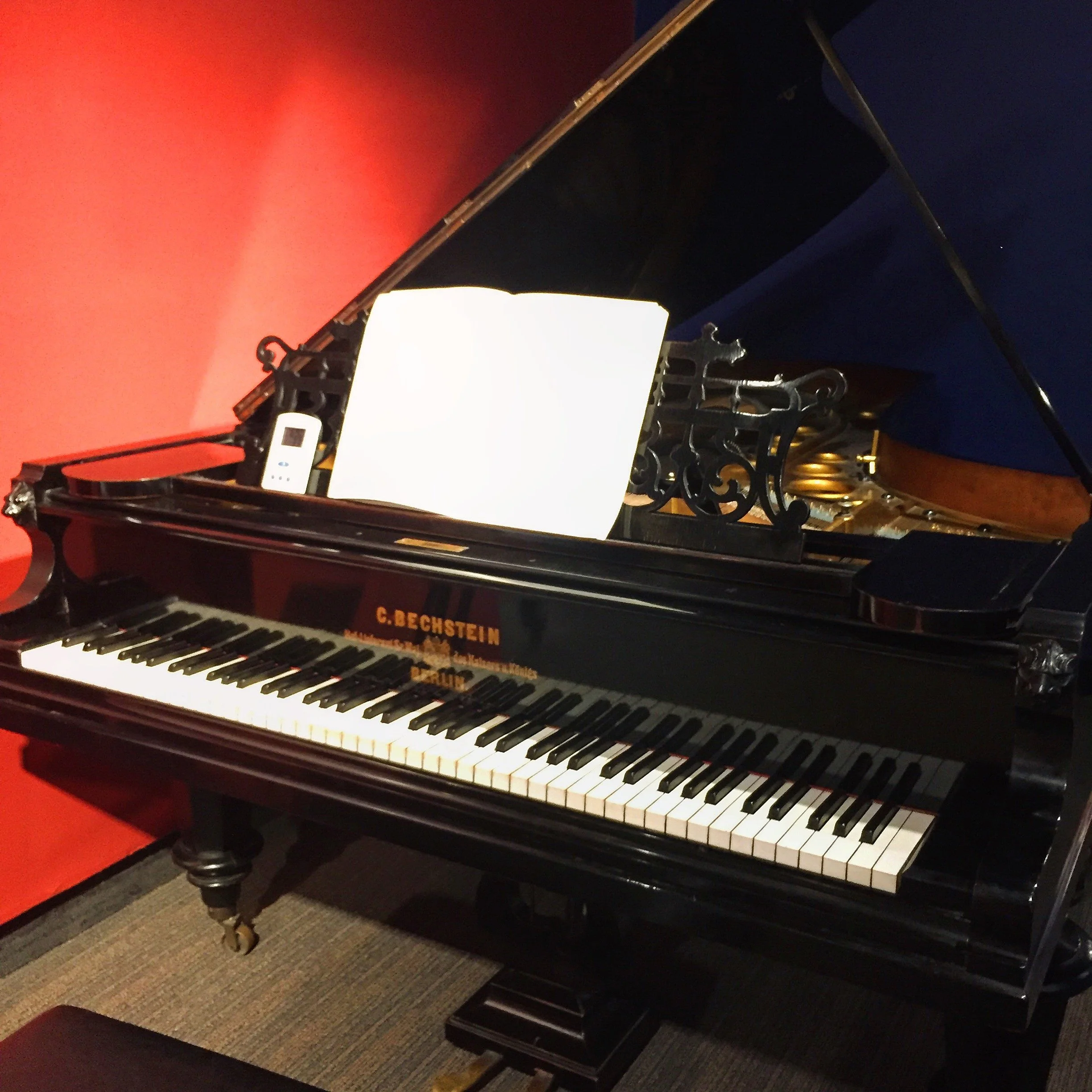My Composition Process + A New Video!
I played my choro on this 1878 Bechstein at the Schubert Club Museum in St. Paul when I visited over the weekend - this piano has also been played by Brahms, Bartok, Liszt, and other famous composers and pianists!
In last week’s post about what I’ve been working on, I mentioned that I just completed the second section of the Brazilian choro that I’ve been writing this year - the one that jump-started this blog. Composing as a habit is somewhat new to me, so I haven’t totally figured out my process (and maybe figuring out my process is also a process), but here’s what’s worked for me so far:
This piece started through a challenge that I did in fall 2015: for a month, I wrote a 4-measure snippet of music each day, with the intent of brainstorming tons of ideas that could develop into a full piece. This was really helpful because it let me get started without the pressure of needing to succeed - I could throw away any snippets that I didn’t really like, and could experiment as much as I wanted. I typically came up with ideas either through just sitting down for some random improvisation, or by being quiet and listening to what I might be hearing in my head (a skill and type of focus I am still developing). Some days were harder than others, but committing to doing it every day helped me stay accountable and develop more fluency with getting ideas from my head to paper.
In preparation for sharing a composition at the New Ruckus Composer Night, I went through my dozens of snippets and starred the ones that I thought were best, but I had known that this choro had a future even as I started writing the first few measures, so it was the clear choice. As I started writing, I worked to have a mindset of separating the creator from the judge inside my head (THIS IS HARD!), telling myself that I was just writing a draft that could eventually be changed, but I ended up only making small changes after the initial draft. I worked slowly, writing semi-daily, sometimes only a measure or two at a time until I got stuck, and then would go for a walk to continue my thought process, if possible. The only problem with walking was that if any ideas came to me, I wouldn’t be near a piano to figure them out and write them down! Generally, I could keep humming or repeating the idea in my head until I returned home, but luckily, the one time that a longer idea started to whoosh through my head, I had paper with me, and had to hastily scribble down some DIY staff paper so I didn’t lose it.
There were also times when I got stuck writing the melody, but mostly understood where I wanted the chord progression to go, and I experimented with getting methodical, writing down many different possibilities for those couple of measures. This helped because it forced me to go beyond the first couple ideas that had come to me, and prevented another problem I sometimes have: the first idea getting lodged in my head after repeatedly playing it on the piano, so I couldn’t hear anything else in that spot.
Though I was writing a Brazilian choro, which has some existing conventions for how melody, harmony, and rhythm work, I found my ear drifting toward less diatonic shifts, more whole-tone steps downward, almost reminiscent of Chopin or even Debussy or Ravel. As I went, I thought, “This is weird, but I like it.” My main criteria for what to write next eventually turned from, “Is this good?” to “Do I like how this sounds?”, which felt much healthier, and elicited a piece that I am really liking. I anticipate adding one more section to the piece, since choro form is often AABBACCA, but I haven’t figured out how that should move forward yet. I also let the music continue to evolve as I play it more (and there’s always an element of improvisation in this type of music) - sometimes I originally write something down in a certain way that doesn’t end up being as intuitive to actually play, so I usually wait to notate it in Sibelius until I have a finished draft of at least a whole section.
Here’s a new video that includes the original A section plus the new B section, then back to A again:
I wish that I had more time and head space to complete pieces faster, but even committing more time to creative music pursuits this fall doesn’t leave me feeling like I have enough. Still, I’ve proved to myself that steady work does lead to finished sections, and eventually finished pieces. I’ll plan on sharing another video once I finally finish the last section!
